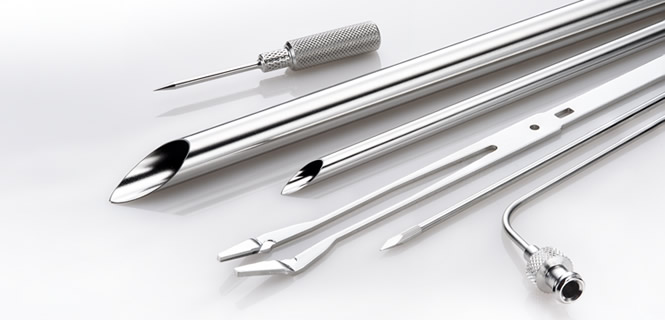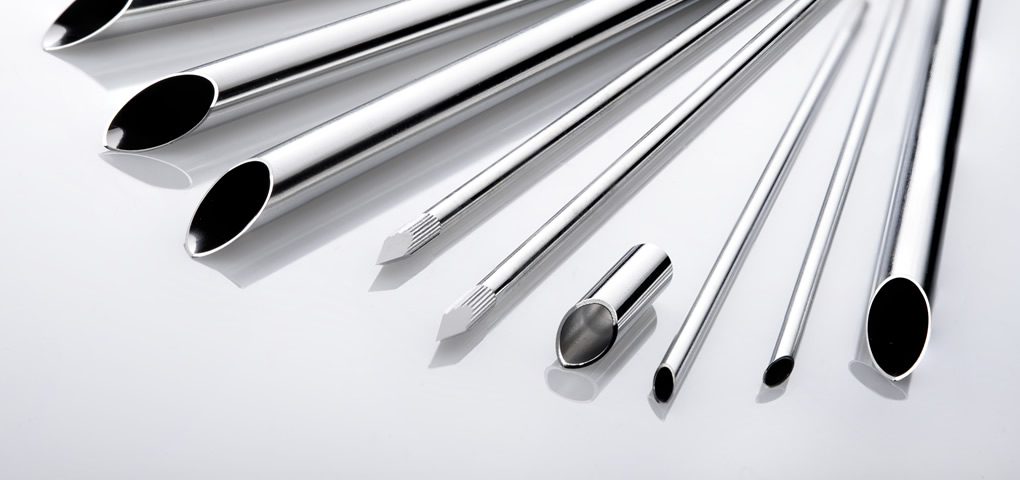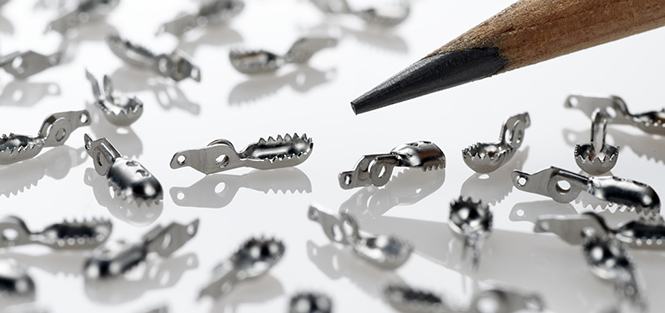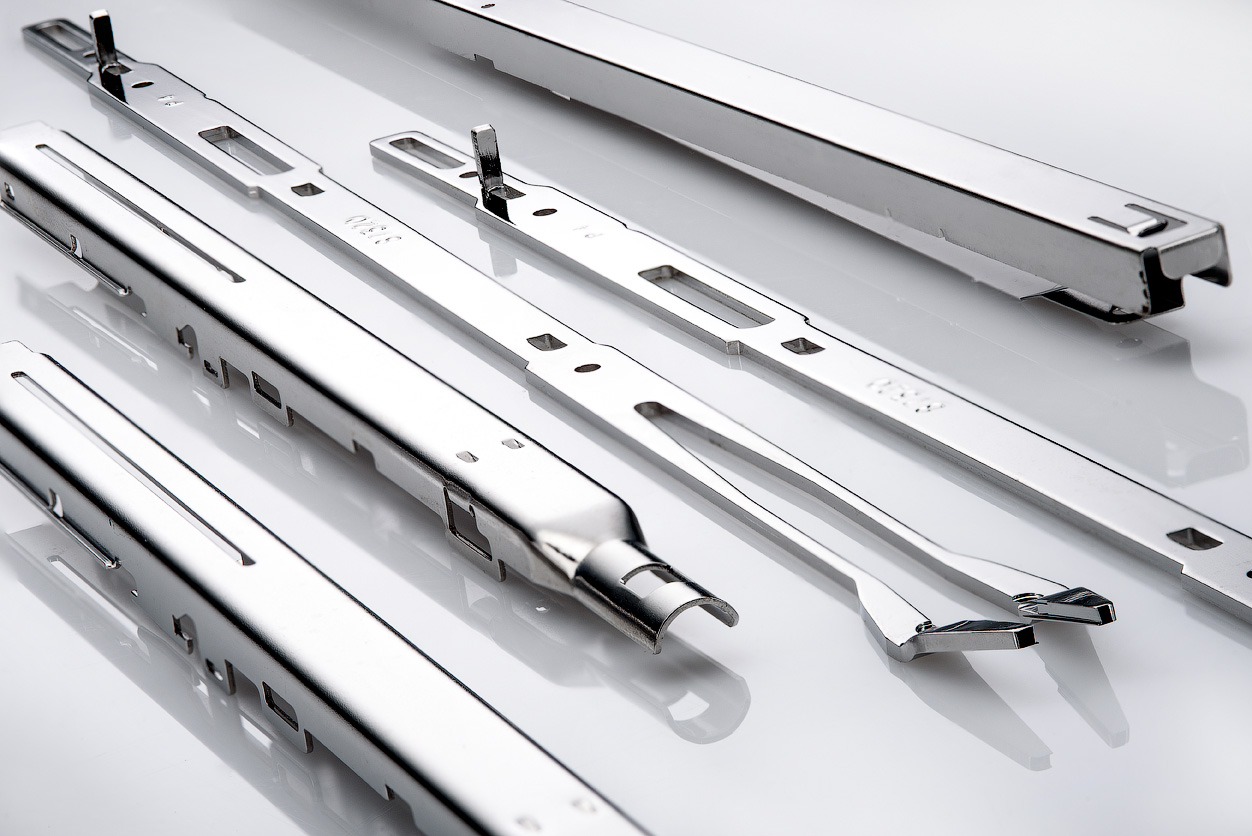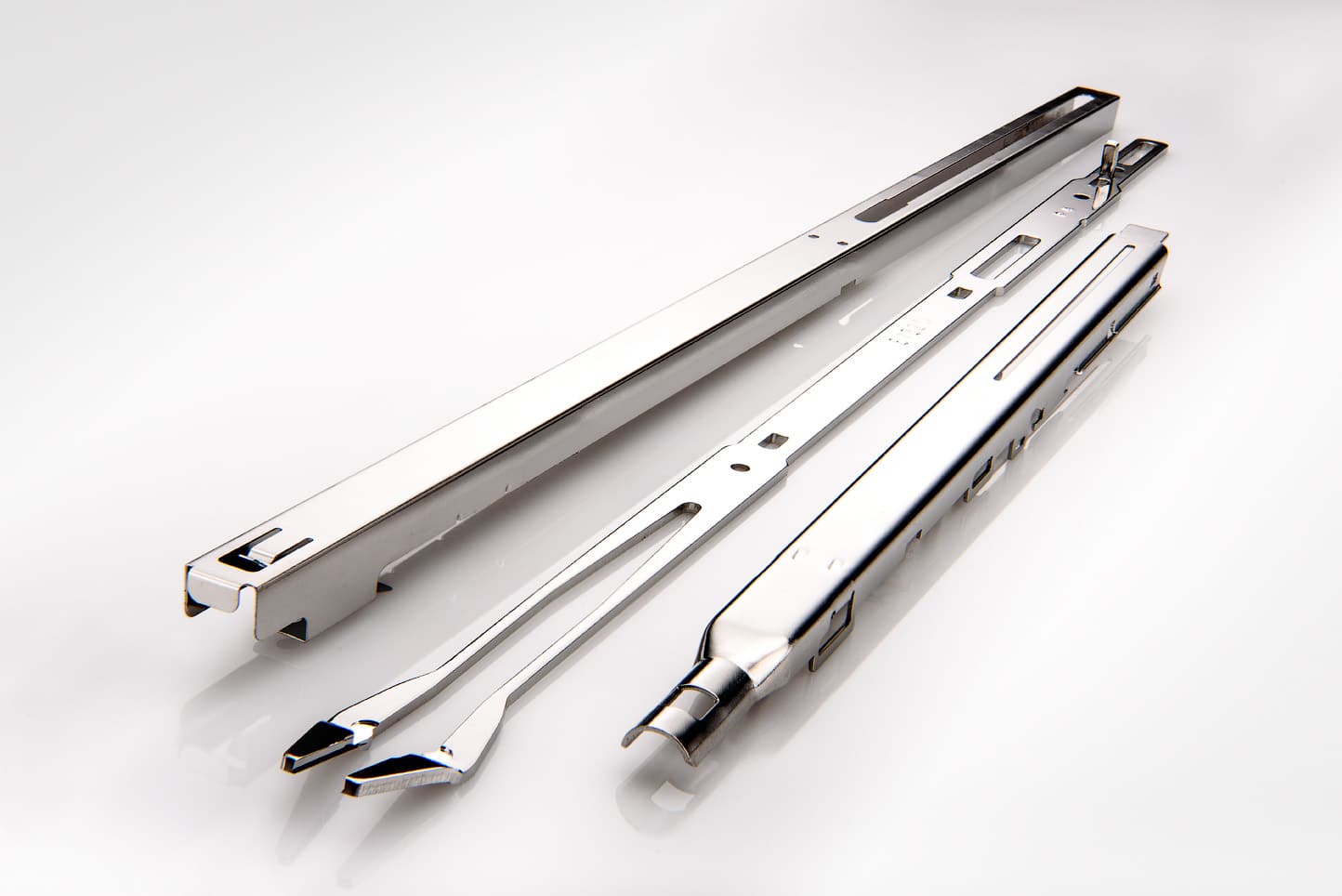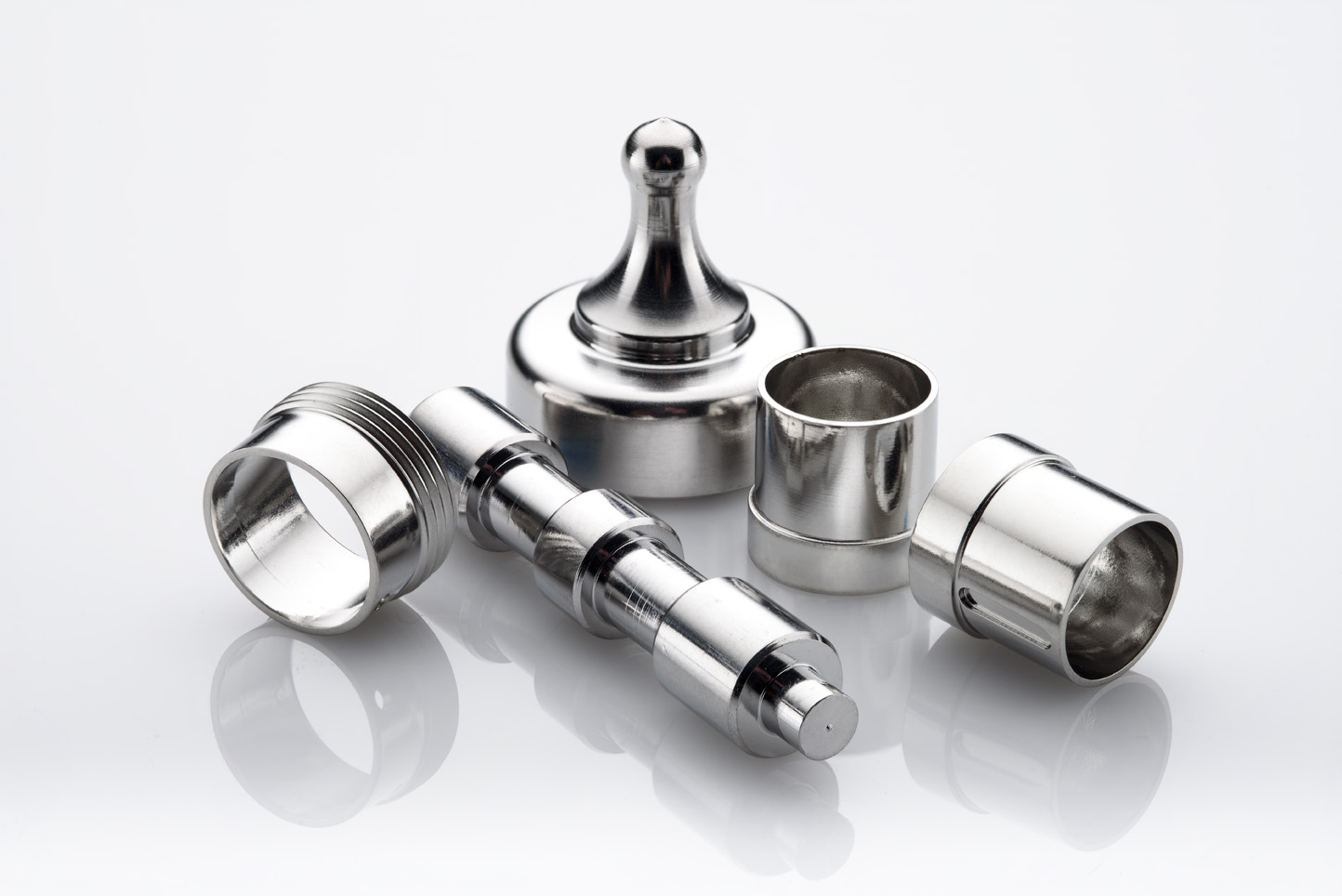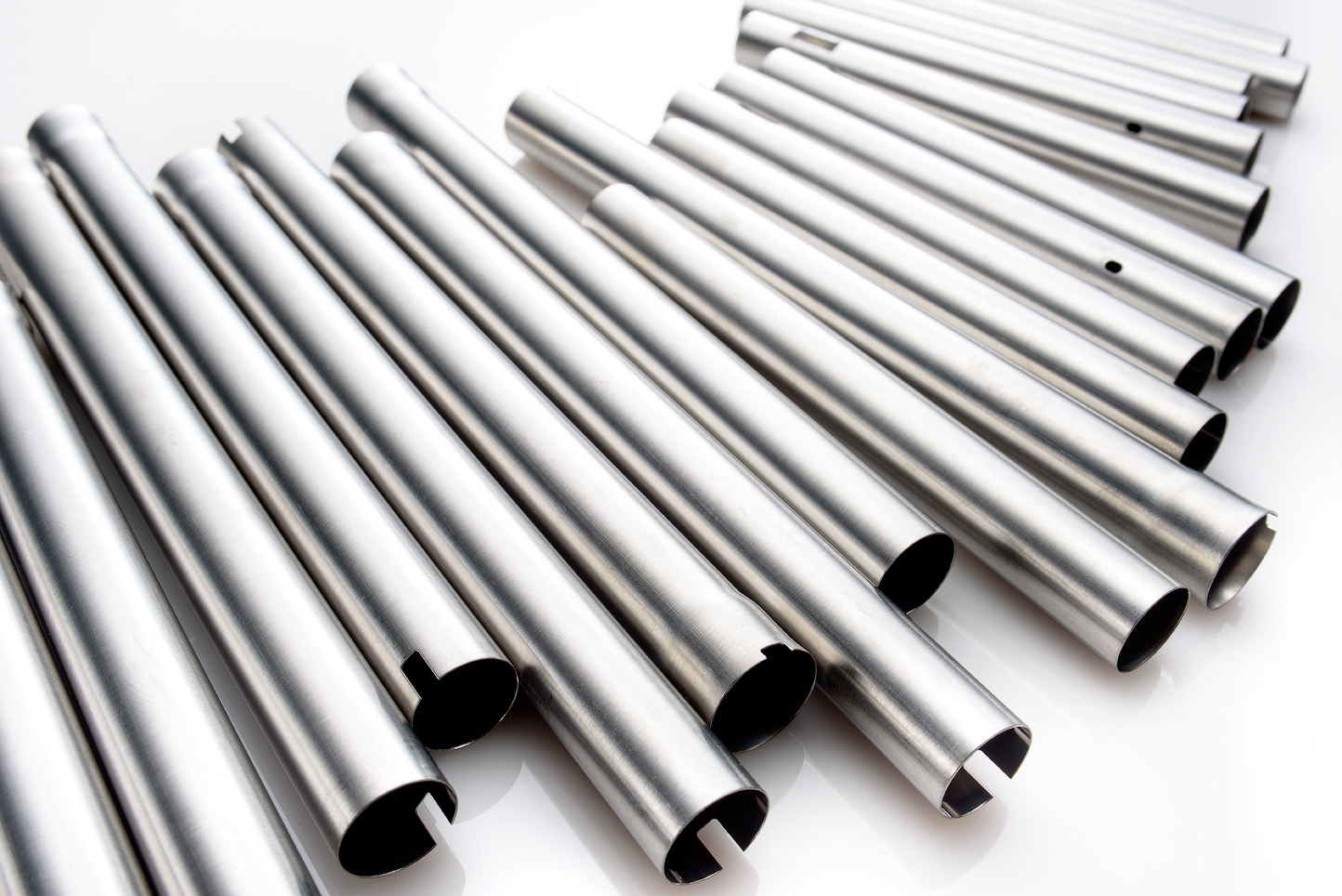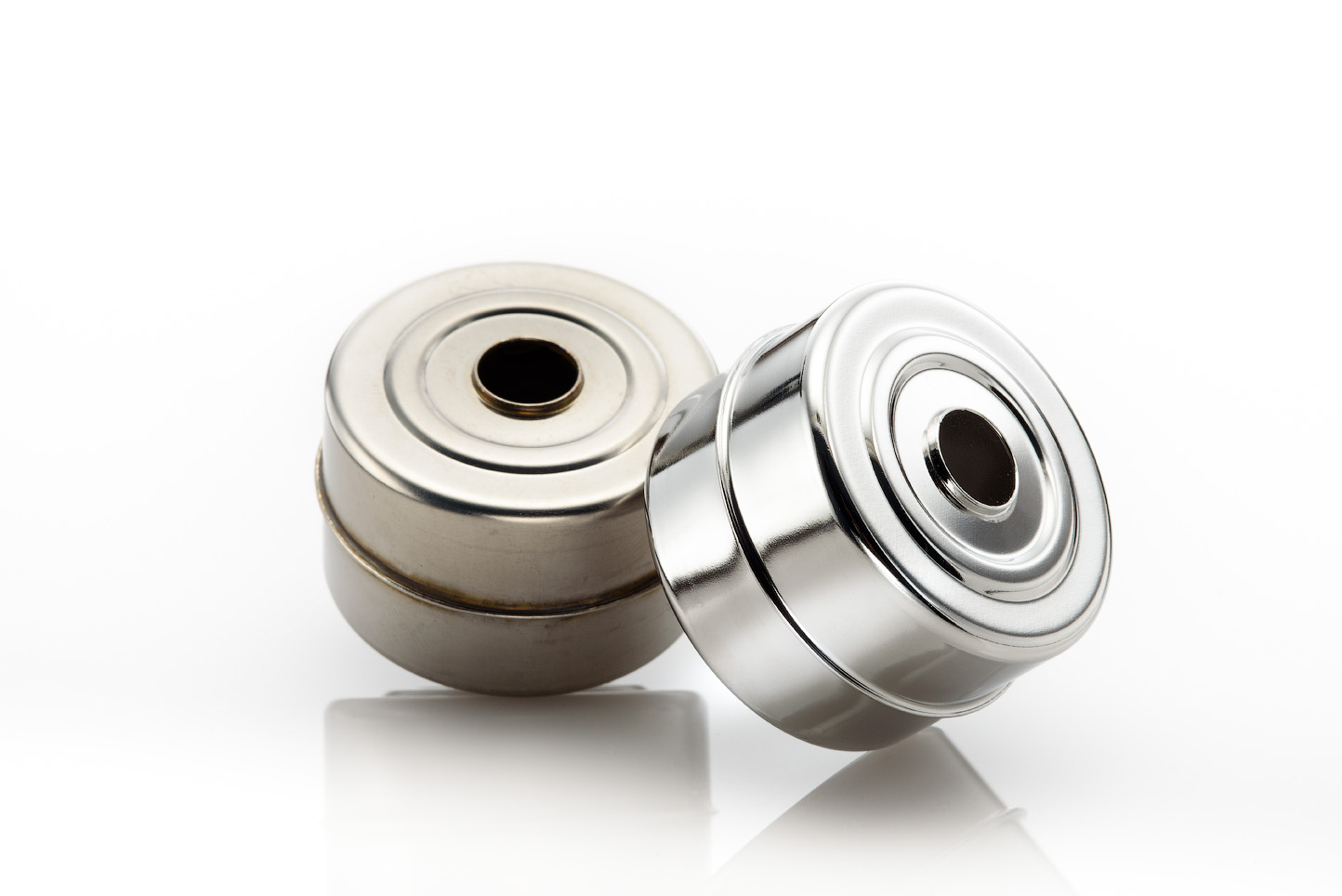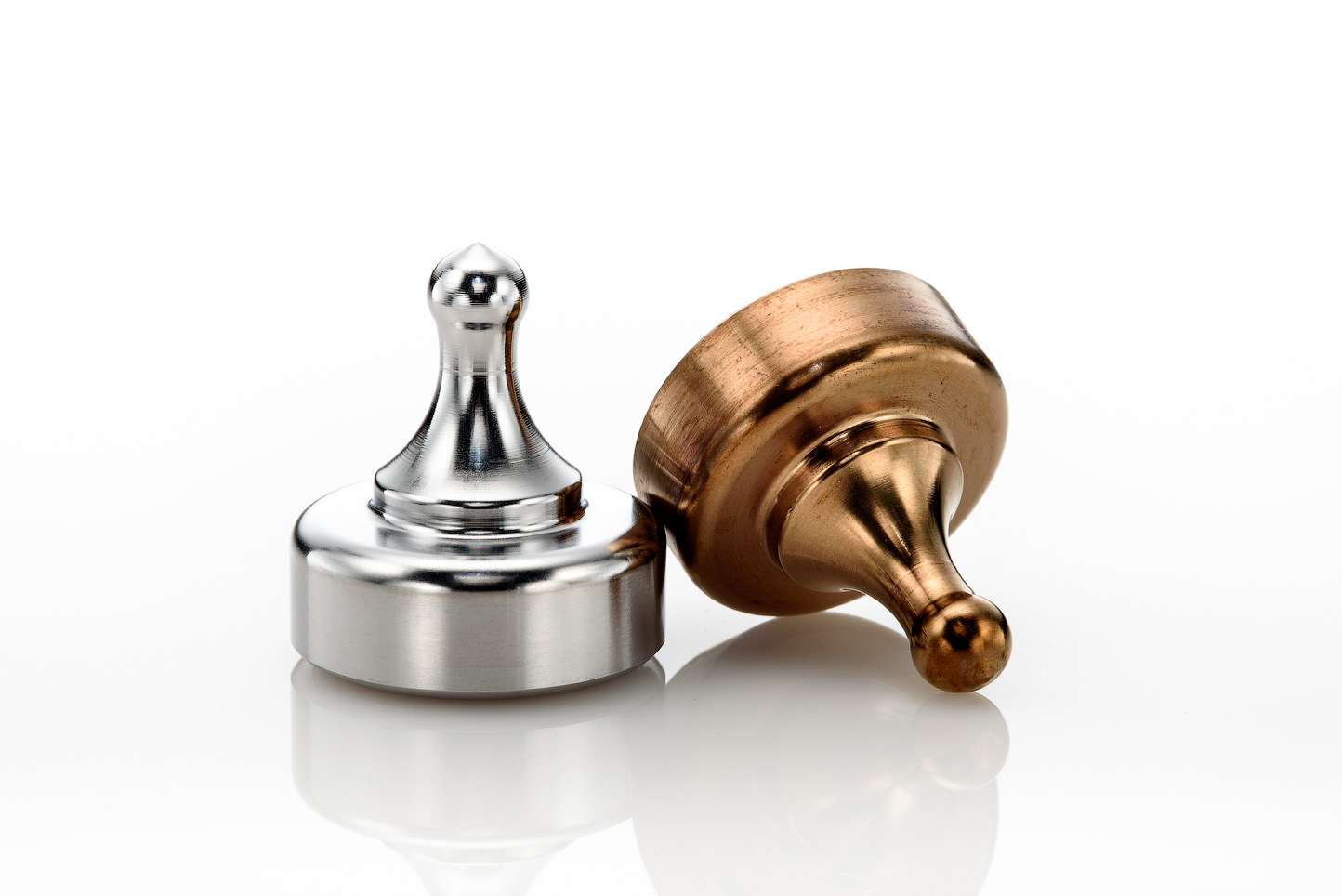What is Electropolishing?
Electropolishing is an electrochemical or “reverse plating” process that removes the outer layer of “skin” on a metal part to address microscopic imperfections within its finish —as opposed to electroplating, which deposits metal onto the finished surface. Electropolishing is commonly used to clean, deburr and passivate parts as part of the manufacturing process.
What is electropolishing and how it works
Electropolishing will smooth and streamline the microscopic surface of most metal objects, improve surface finish, improve corrosion resistance and achieve passivation—typically stainless steel or similar alloys. Electropolishing typically takes off between 0.0002 and 0.0003 of an inch from the surface of an object. Learn more about how much material electropolishing removes.
The electropolishing process may improve the surface finish of your metal part by 10%-40% (depending on part tolerances and surface finish) or more—rendering the surface of the metal microscopically featureless and void of any tiny imperfections. Often, during a standard run, total material removal is limited between 0.0002” to 0.0003” per surface—but the removal rate can be adjusted depending on a part’s tolerances.
It’s important to note that electropolishing only improves the surface of a metal part on a microscopic level. Any macroscopic textures or surface scratches will only result in a smoother texture or smoothed scratch if taken through the electropolishing process. For macroscopic surface imperfections, mass finishing is the more appropriate process for the job.
How do we do it? We first load the parts onto racks, which we dip into a tank filled with a phosphoric and sulfuric acid solution. The tank is lined with metal plates that function as cathodes so we can run a positive electric current through the bath.
We can adjust the removal rate to a specified tolerance, and we check throughout our process to ensure we are meeting the targets we set. This is especially important during electropolishing of large batches of parts, so we ensure that our quality is consistent from the first part to the last. Learn more about the electropolishing process.
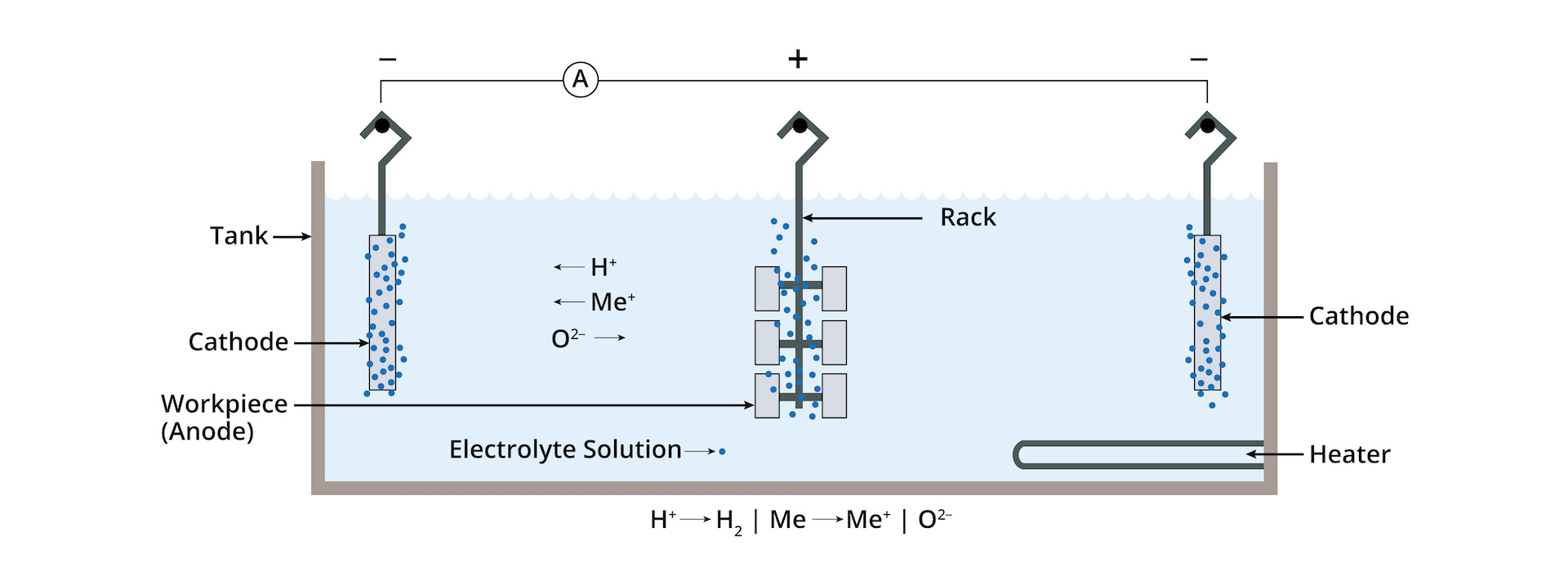
Can Electropolishing Achieve Passivation? Yes.
The Passivation of stainless steel is the removal of free iron from the surface of a part. Electropolishing will remove free iron, as well as de-burr and deeply clean the surface. This can be especially important when you have small parts with trace amounts of free iron and micro-burrs.
The passivation of stainless steel at NEE can be performed to industry standards such as ASTM A967 and ASTM B912.
To learn more about Electropolising, please watch the video on this page or visit our electropolishing resources page for more information.
Understanding Electrochemical Polishing
Electrochemical polishing serves as an umbrella term encompassing various specialized processes aimed at refining metal surfaces through controlled chemical reactions. These processes include electropolishing, citric acid passivation, electrolytic polishing, and more. Each method offers unique advantages and applications, but they all share the common goal of achieving superior surface quality and finish. Whether it’s enhancing corrosion resistance, improving aesthetic appeal, or optimizing functionality, electrochemical polishing techniques provide versatile solutions for a wide range of industries, from aerospace and automotive to medical devices and beyond. Contact us today to discuss what would be the ideal treatment for your needs.
Electrolytic Polishing
In the world of metal finishing, the terms “electropolishing” and “electrolytic polishing” often coexist, but they aren’t interchangeable. Electrolytic Polishing sometimes referred to as Electrolytic CMP or E-CMP is a metal finishing process that combines elements of CMP (chemical mechanical polishing) with that of electro-dissolution. While both processes involve the use of electric current to polish metal surfaces, the gold standard for stainless steel passivation remains Electropolishing. This specialized technique offers a level of precision and quality that surpasses traditional methods, ensuring metal components achieve a flawlessly smooth, corrosion-resistant finish.
At New England Electropolishing, we stand by the importance of accurate terminology and feel it’s important for our customers to understand the difference between electrolytic polishing and electropolishing. Electropolishing is not just a process; it’s a refined science, meticulously designed to enhance the surface of metal alloys to perfection. Our expert team of electropolishers understands the nuances of this technique, ensuring your components are treated with the utmost care, resulting in an unparalleled level of quality and durability.
Does Electropolishing Prevent Corrosion?
"Electropolishing is an electrochemical process that enhances metal alloys resistance to corrosion. Electropolishing is used to clean, deburr and passivate metals by removing impurities from the surface left behind from manufacturing processes."
Electropolishing before and after examples

High Treated Machined Parts
Our small part electropolishing process will remove heat scale and contaminates on a parts’ surface while keeping material removal to a minimum (.0001-.0002” precision).
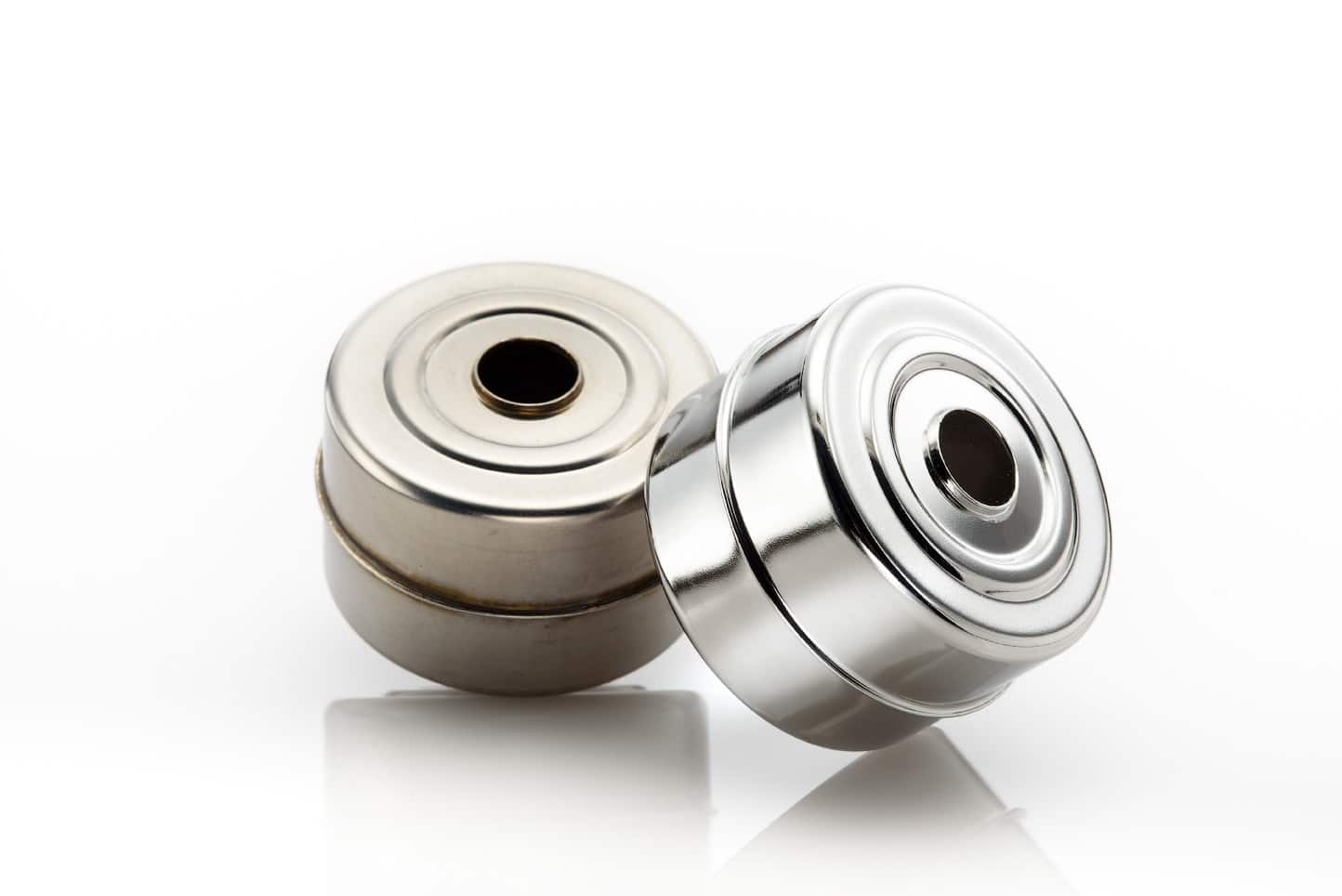
Level Floats
Electropolishing removes weld discoloration while producing a mirror finish that is corrosion resistant.
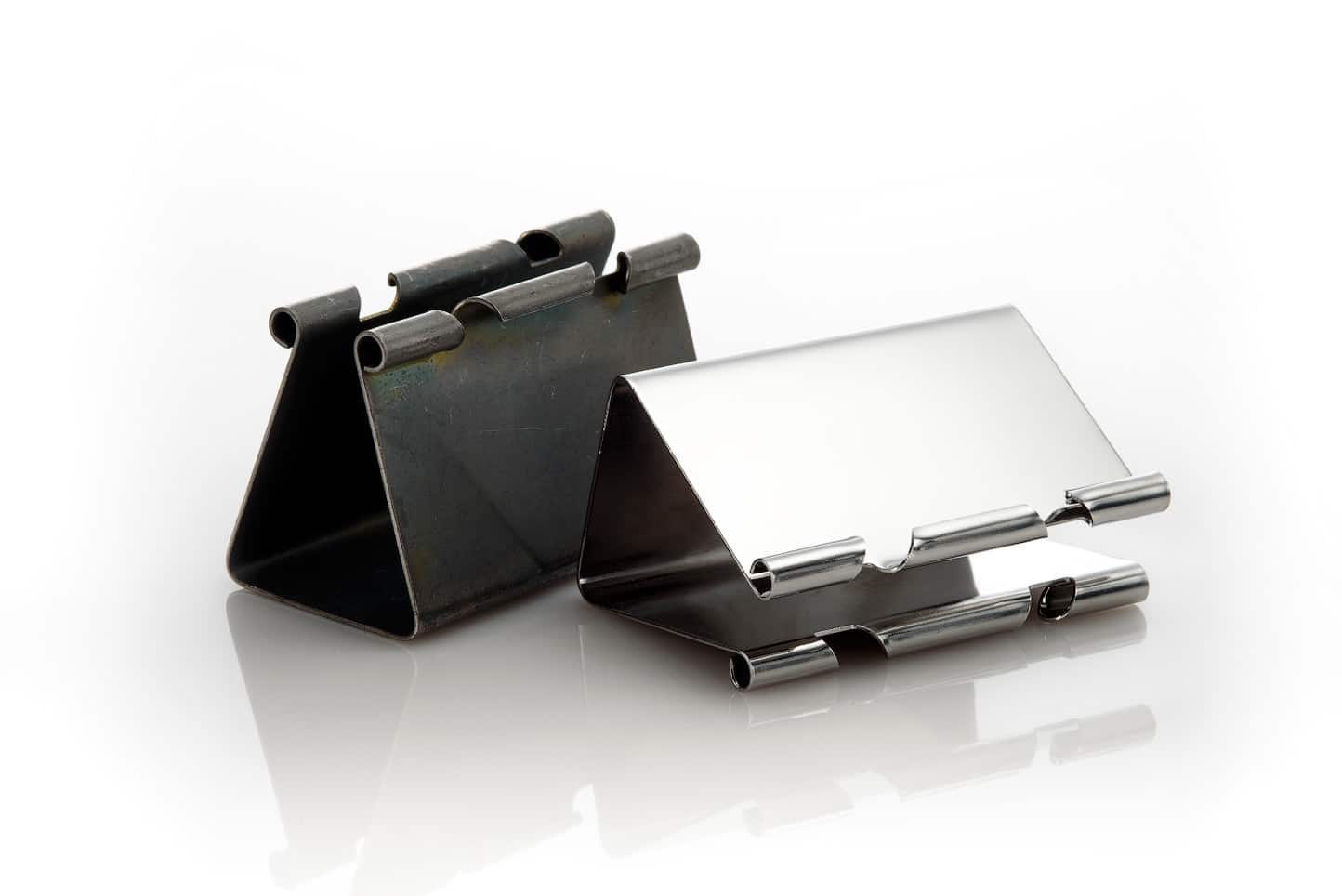
Surgical Clips
Oxide is removed through Electropolishing creating a mirror finish.
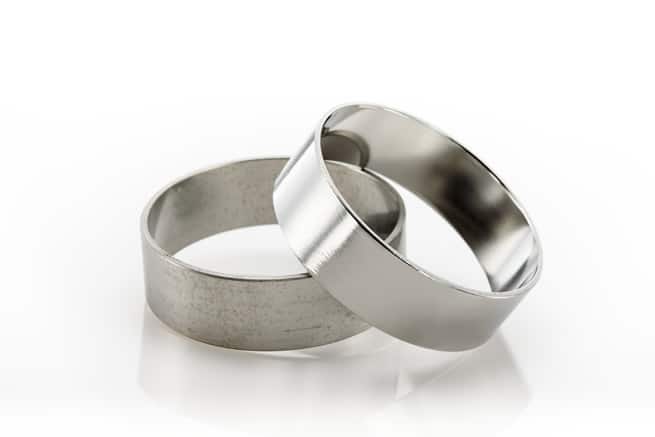
Small Electropolished Rings & Tubes
OD and ID finishing of High Purity Ring-Internal Ra 8.
Electropolishing Resources
What is Electropolishing?
Electropolishing is an electrochemical and reverse plating process that removes the outer layer of skin on a metal...
The Electropolishing Process
The electropolishing process is initiated by immersing a metal part into a temperature-controlled bath of electrolyte...
How Much Material Does Electropolishing Remove?
Electropolishing, when done properly is a highly controllable process which removes as little as...
How Much Will Electropolishing Improve the Surface of my Part?
Ra and RMS are both representations of surface roughness. Ra is calculated as the roughness average of a surface’s...
What is ASTM B912?
ASTM B912 is an industry standard for the passivation of stainless steel alloys through electropolishing...
What is ASTM A967
ASTM A967 is an industry standard specification for the chemical passivation treatments for stainless...
